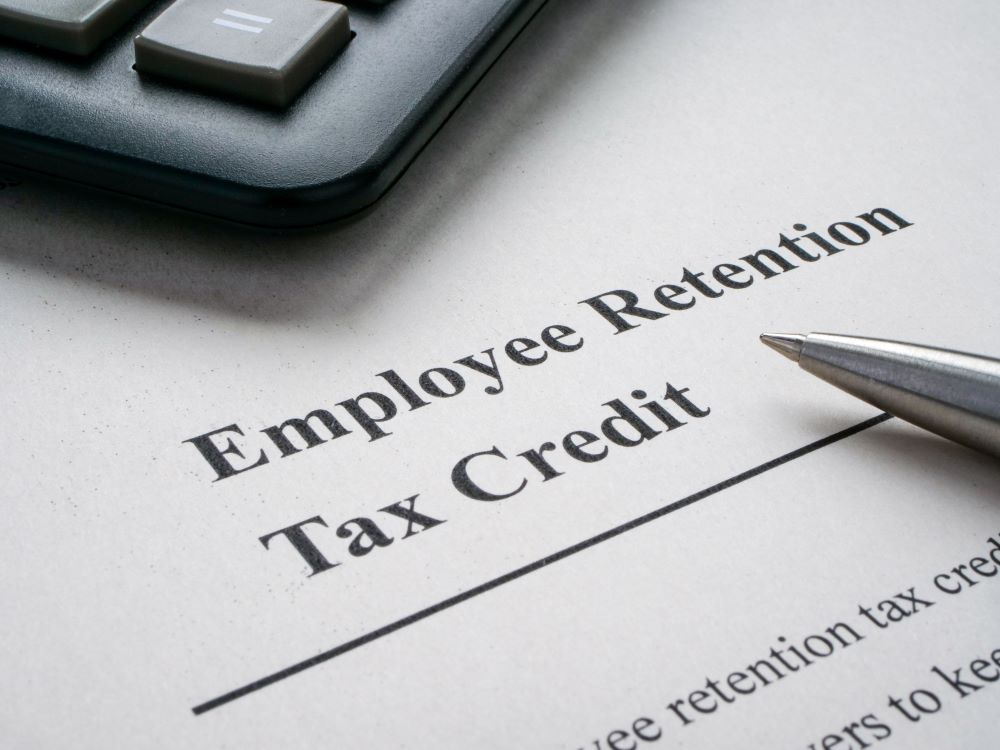The Internal Revenue Services says that, following a detailed review, it expects to deny tens of thousands of improper high-risk Employee Retention Credit claims while starting a new round of processing lower-risk claims to help eligible taxpayers.
“The completion of this review provided the IRS with new insight into risky Employee Retention Credit activity and confirmed widespread concerns about a large number of improper claims,” said IRS Commissioner Danny Werfel. “We will now use this information to deny billions of dollars in clearly improper claims and begin additional work to issue payments to help taxpayers without any red flags on their claims.”
“This is one of the most complex credits the IRS has administered, and we continue to ask taxpayers for patience as we unravel this complex process,” Werfel added. “Ultimately, this period will help us protect taxpayers against improper payouts that flooded the system and get checks to those truly eligible.”
The review involved months of digitizing information and analyzing data since last September to assess a group of more than 1 million Employee Retention Credit (ERC) claims representing more than $86 billion filed amid aggressive marketing last year.
During this process, the IRS identified between 10% and 20% of claims fall into what the agency has determined to be the highest-risk group, which show clear signs of being erroneous claims for the pandemic-era credit. Tens of thousands of these will be denied in the weeks ahead. This high-risk group includes filings with warning signals that clearly fall outside the guidelines established by Congress.
In addition to this highest risk group, the IRS analysis also estimates between 60% and 70% of the claims show an unacceptable level of risk. For this category of claims with risk indicators, the IRS will be conducting additional analysis to gather more information with a goal of improving the agency’s compliance review, speeding resolution of valid claims while protecting against improper payments.
At the same time, the IRS continues to be concerned about small businesses waiting on legitimate claims, and the agency is taking more action to help. Between 10% and 20% of the ERC claims show a low risk. For those with no eligibility warning signs that were received prior to the last fall’s moratorium, the IRS will begin judiciously processing more of these claims.
The IRS anticipates some of the first payments in this group will go out later this summer. But the IRS emphasized these will go out at a dramatically slower pace than payments that went out during the pandemic period given the need for increased scrutiny.
As the additional IRS processing work begins at a measured pace, other claims will begin being paid later this summer following a final review. This additional review is needed because the submissions may have calculation errors made during the complex filings. For those claims with calculation errors, the amount claimed will be adjusted before payment.
The IRS also noted that generally the oldest claims will be worked first, and no claims submitted during the moratorium period will be processed at this time.
No additional action needed by taxpayers at this time; await further notification from the IRS
The IRS cautioned taxpayers who filed ERC claims that the process will take time, and the agency warned that processing speeds will not return to levels that occurred last summer. Taxpayers with claims do not need to take any action at this point, and they should await further notification from the IRS. The agency emphasized those with ERC claims should not call IRS toll-free lines because additional information is generally not available on these claims as processing work continues.
“These complex claims take time, and the IRS remains deeply concerned about how many taxpayers have been misled and deluded by promoters into thinking they’re eligible for a big payday. The reality is many aren’t,” Werfel said. “People may think they are on safe ground, but many are simply not eligible under the law. The IRS continues to urge those with pending claims to use this period to review the guideline checklist on IRS.gov, talk to a legitimate tax professional rather than a promoter and use the special IRS withdrawal program when there’s an issue.”
Werfel also cautioned taxpayers to be wary of promoters using today’s announcement as a springboard to attract more clients to file ERC claims.
“The whole world has changed involving Employee Retention Credits since the deepest days of the pandemic,” Werfel said. “Anyone applying for this credit needs to talk to a trusted tax professional and closely review the eligibility requirements, not someone playing fast and loose and trying to make a fast buck off well-meaning taxpayers. People need to be cautious of promoters trying to take advantage of today’s announcement to drive more business. People should remember the IRS continues to be very active in our compliance lanes on Employee Retention Credits.”
Steps taken since September 2023 when processing moratorium on new ERC claims began
During the ERC review period, the IRS continued to process claims received prior to September 2023. The agency processed 28,000 claims worth $2.2 billion and disallowed more than 14,000 claims worth more than $1 billion.
The ERC program began as a critical effort to help businesses during the pandemic, but the program later became the target of aggressive marketing well after the pandemic ended. Some promoter groups may have called the credit by another name, such as a grant, business stimulus payment, government relief or other names besides ERC or the Employee Retention Tax Credit (ERTC).
To counter the flood of claims being driven by promoters, the IRS announced last fall a moratorium on processing claims submitted after Sept. 14, 2023, to give the agency time to digitize information on the large study group of nearly 1 million ERC claims, which are made on amended paper tax returns. The subsequent analysis of the results during this period helped the IRS evaluate next steps, providing the IRS valuable information to change the way the agency will process ERC claims going forward.
The findings of the IRS review confirmed concerns raised by tax professionals and others that there was an extremely high rate of improper ERC claims.
The claims followed a flurry of aggressive marketing and promotions last year that led to people being misled into filing for the ERC. After the moratorium was put in place on Sept. 14, the IRS has continued to see ERC claims continuing to come in at the rate of more than 17,000 a week, with the ERC inventory currently at 1.4 million.
In light of the large inventory and the results of the ERC review, the IRS will keep the processing moratorium in place on ERC claims submitted after Sept. 14, 2023. The IRS will use this period to gather additional feedback from partners, including Congress and others, on the future course of ERC.
“We decided to keep the post-September moratorium in place because we continue to be concerned about the substantial number of claims coming in so long after the pandemic,” Werfel said. “These claims are clogging the system for legitimate taxpayers. We worry that ending the moratorium might trigger a gold rush by aggressive marketers that could lead to a new round of improper claims, which would be a bad result for taxpayers or tax administration. We will use this time to consult with Congress and seek additional help from them on the ERC program, including potentially closing down new claims entirely and seeking an extension of the statute of limitations to allow the agency more time to pursue improper claims.”
Special IRS Withdrawal Program remains open for those with unprocessed ERC claims
Given the large number of questionable claims indicated by the new review, the IRS continues to urge those with unprocessed claims to consider the special IRS ERC Withdrawal Program to avoid future compliance issues.
Businesses should quickly pursue the claim withdrawal process if they need to ask the IRS to not process an ERC claim for any tax period that hasn’t been paid yet. Taxpayers who received an ERC check — but haven’t cashed or deposited it — can also use this process to withdraw the claim and return the check. The IRS will treat the claim as though the taxpayer never filed it. No interest or penalties will apply.
With more than 1.4 million unprocessed ERC claims, the claim withdrawal process remains an important option for businesses who may have submitted an improper claim.
IRS compliance work tops $2 billion from Voluntary Disclosure Program, withdrawal process, disallowances
The IRS also announced today that compliance efforts around erroneous ERC claims have now topped more than $2 billion since last fall. This is nearly double the amount announced in March following completion of the special ERC Voluntary Disclosure Program (VDP), which the IRS announced led to the disclosure of $1.09 billion from over 2,600 applications. The IRS is currently considering reopening the VDP at a reduced rate for those with previously processed claims to avoid future compliance action by the IRS.
Compliance work on previously processed ERC claims continue, and work continues on a number of efforts to counter questionable claims:
- The ongoing claim withdrawal process for those with unprocessed ERC claims has led to more than 4,800 entities withdrawing $531 million.
- The IRS has determined that more than 12,000 entities filed over 22,000 claims that were improper and resulted in $572 million in assessments. This initial round of letters covers Tax Year 2020. Thousands more of these letters are planned in coming months to address Tax Year 2021, which involved larger claims. Congress increased the maximum ERC from $5,000 per employee per year in 2020, to $7,000 per employee for each quarter of the year in 2021.
- More than 2,600 applications for the special ERC Voluntary Disclosure Program (VDP), which ended in March, disclosed $1.09 billion.
The IRS is currently assessing whether to reopen the special ERC Voluntary Disclosure Program to help taxpayers get into compliance on paid claims and avoid future IRS compliance action, including audits. If the program reopens, the IRS anticipates the terms will not be as favorable as the initial offering that closed in the spring. A decision will be made in coming weeks.
The IRS also reminded those with pending claims or considering submitting an ERC claim about other compliance actions underway:
Criminal investigations: As of May 31, 2024, IRS Criminal Investigation has initiated 450 criminal cases, with potentially fraudulent claims worth nearly $7 billion. In all, 36 investigations have resulted in federal charges so far, with 16 investigations resulting in convictions and seven sentencings with an average sentence of 25 months.
Audits: The IRS has thousands of ERC claims currently under audit.
Promoter investigations: The IRS is gathering information about suspected abusive tax promoters and preparers improperly promoting the ability to claim the ERC. The IRS’s Office of Promoter Investigations has received hundreds of referrals from internal and external sources. The IRS will continue civil and criminal enforcement efforts of these unscrupulous promoters and preparers.
Help for businesses with eligibility questions and those misled by promoters
Some promoters told taxpayers every employer qualifies for ERC. The IRS and the tax professional community emphasize that this is not true. Eligibility depends on specific facts and circumstances. The IRS has dozens of resources to help people learn about and check ERC eligibility and businesses can also consult their trusted tax professional. Key IRS materials to help show taxpayers if they have a risky ERC claim include:
- ERC Eligibility Checklist (interactive version and a printable guidePDF) includes cautions about common areas of misinformation and links to facts and examples.
- 7 warning signs ERC claims may be incorrect outlines tactics that unscrupulous promoters have used and why their points are wrong.
- Frequently asked questions about the Employee Retention Credit includes eligibility rules, definitions, examples and more.
Thanks for reading CPA Practice Advisor!
Subscribe Already registered? Log In
Need more information? Read the FAQs
Tags: Income Tax, IRS, Taxes




